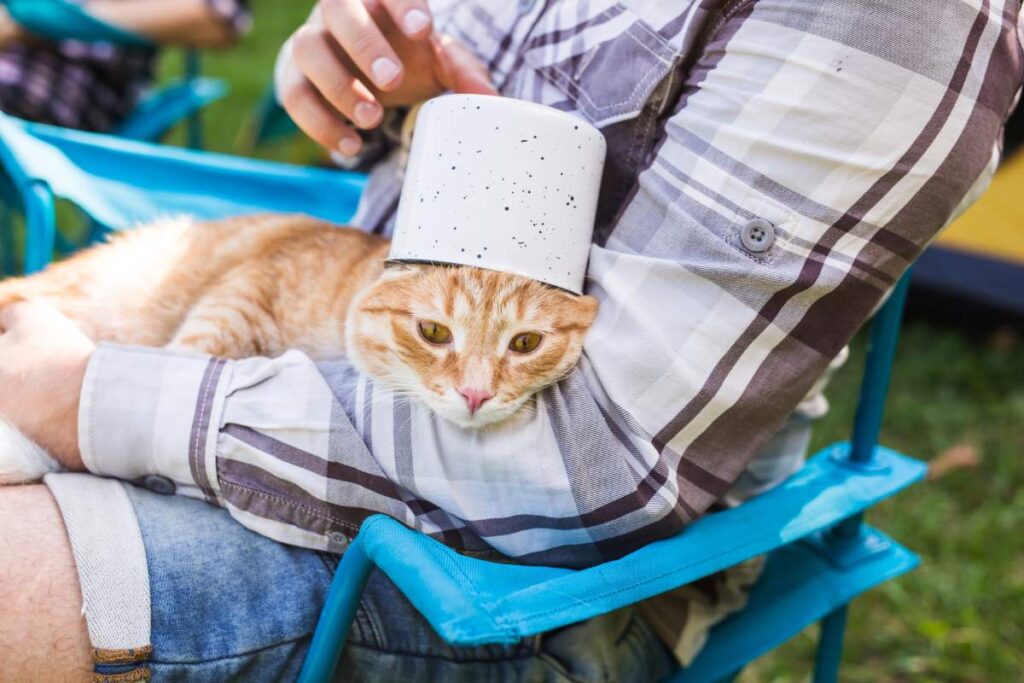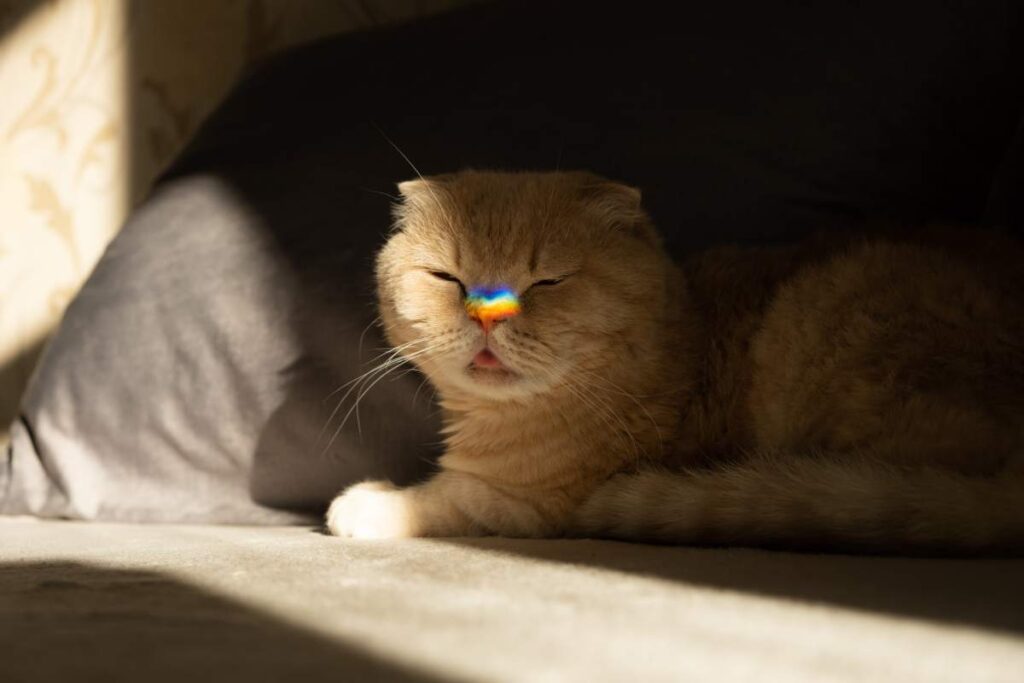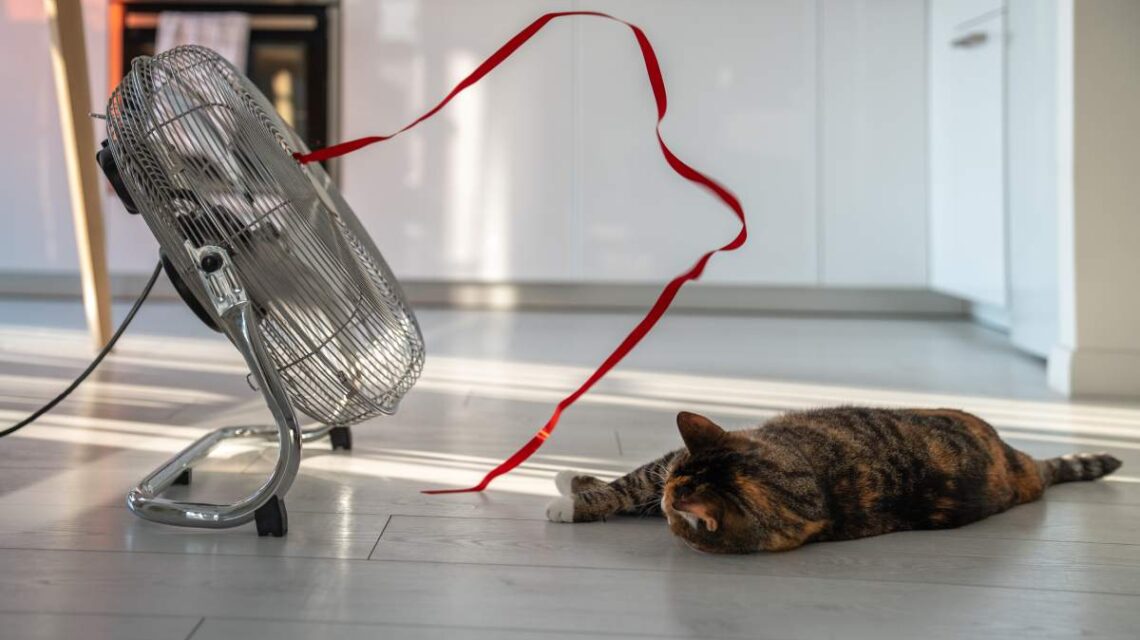Summer can bring a lot of joy with longer days and warmer weather, but it also poses challenges for our feline friends. Cats are sensitive to heat and can suffer from heatstroke or discomfort if not properly cared for during hot spells. Ensuring that your cat stays cool and comfortable is crucial for their health and happiness.
In this guide, we’ll explore practical and easy-to-follow tips to help keep your cat cool in the summer, ensuring they stay safe and content as temperatures rise.
Can Cats Get Heatstroke?
Yes, cats can get heatstroke, just like humans and dogs. Heatstroke is a serious condition that happens when a cat’s body gets too hot and can’t cool down effectively. It can be dangerous and even life-threatening if not treated promptly.
What is Heatstroke?
Heatstroke, also known as hyperthermia, occurs when a cat’s body temperature rises above the normal range. For cats, a normal body temperature is around 38.1 to 39.2°C. When a cat’s body temperature goes above 39.4°C, it can be a sign of heatstroke.
Signs of Heatstroke in Cats
Cats are not as obvious in showing discomfort as dogs, so it’s important to know the signs:
- Panting: Unlike dogs, cats don’t usually pant. If you see your cat panting, it’s a sign they might be overheated.
- Excessive Thirst: Cats with heatstroke will drink more water than usual.
- Lethargy: A cat with heatstroke may become unusually tired or weak.
- Drooling: Excessive drooling can be a sign of heatstroke.
- Red or Pale Gums: Check your cat’s gums. If they are red, pale, or dry, it might indicate overheating.
- Vomiting or Diarrhea: These can also be symptoms of heatstroke.
- Unsteadiness or Seizures: Severe heatstroke can affect a cat’s nervous system, causing unsteady movements or seizures.

How Does Heatstroke Happen?
Heatstroke usually occurs when a cat is exposed to high temperatures for too long. This can happen in a variety of situations:
- Hot Weather: During summer months or in high temperatures, cats can overheat if they are outside without shade or access to water.
- Locked Cars: Never leave your cat in a parked car, even for a short time. The temperature inside can quickly become dangerously high.
- Indoor Heat: In very hot indoor environments, such as rooms with poor ventilation or no air conditioning, cats can also suffer from heatstroke.
How to Prevent Heatstroke
Here are some tips to keep your cat cool and prevent heatstroke:
- Provide Fresh Water: Always have fresh water available for your cat to drink.
- Create a Cool Space: Ensure your cat has a cool, shaded place to rest, especially during hot weather.
- Avoid Hot Cars: Never leave your cat in a car, even with the windows cracked open.
- Use Fans or Air Conditioning: If you don’t have air conditioning, a fan can help keep the air moving and cool down the environment.
- Limit Outdoor Time: During extreme heat, try to keep your cat indoors or limit their time outside.
What to Do if Your Cat Shows Signs of Heatstroke
If you suspect your cat has heatstroke, act quickly:
- Move Your Cat to a Cooler Area: Get them to a shaded or air-conditioned space.
- Offer Water: Give them water to drink, but don’t force them to drink.
- Cool Them Down Gradually: Use a damp cloth to gently cool their body. Avoid using ice or very cold water, as this can cause shock.
- Seek Veterinary Care: Contact your vet immediately. Heatstroke is a serious condition that needs professional treatment.
How to Keep Cats Cool in Summer
Summer can be a tough time for cats, especially if they’re not used to high temperatures. Keeping your cat cool and comfortable during the hot months is essential for their health and well-being. Here are some practical tips to help your feline friend stay cool:
1. Provide Fresh Water
Always have fresh, clean water available for your cat. Hydration is crucial in hot weather. Consider adding a few extra water bowls around the house or investing in a pet water fountain, which many cats find more appealing.
2. Create Cool Spots
Ensure your cat has access to cool, shaded areas where they can relax. You can create a cool spot by:
- Using Cooling Mats: Pet cooling mats are designed to stay cool without the need for refrigeration or electricity. They provide a comfortable place for your cat to lie down and cool off.
- Providing Shade: If your cat likes to lounge by a window, make sure there’s shade available to prevent direct sunlight from overheating them.
3. Use Fans and Air Conditioning
Fans and air conditioning can help regulate the temperature in your home.
- Fans: Place a fan in the room where your cat spends most of their time. A gentle breeze can help keep the air cool and comfortable.
- Air Conditioning: If you have air conditioning, ensure it’s set to a comfortable temperature. Cats generally prefer cooler environments, so aim for a temperature around 24°C.

4. Keep the Environment Cool
In addition to fans and air conditioning, you can take other steps to keep your home cool:
- Close Blinds or Curtains: Keeping blinds or curtains closed during the hottest part of the day can help reduce the amount of heat entering your home. Tinting your window can also filter out hot weather from the outside.
- Ventilation: Make sure your home is well-ventilated to allow for air circulation. Open windows in the early morning or late evening when it’s cooler outside. Or install plantation shutters to keep your house ventilating indoor air.
5. Offer Wet Treats
Wet food or treats can help with hydration and cooling. Consider giving your cat some chilled or room-temperature wet food as a special treat. You can also freeze small amounts of wet food in ice cube trays to create cooling treats.
6. Groom Regularly
Regular grooming helps keep your cat’s coat in good condition and can help them stay cool. Brush your cat frequently to remove excess fur and reduce the insulation effect of their coat.
7. Avoid Hot Cars
Never leave your cat in a parked car, even with the windows slightly open. The temperature inside a car can rise quickly, leading to dangerous conditions for your cat. Always ensure they are safely indoors or in a well-ventilated area.
8. Use Ice Packs Wisely
If your cat is comfortable with it, you can use ice packs to help cool them down. Wrap ice packs in a towel and place them near your cat’s resting area, ensuring they can choose to move away if they prefer.
9. Monitor Your Cat
Keep an eye on your cat’s behaviour during hot weather. If they seem lethargic, panting, or displaying other signs of heat distress, take immediate action to cool them down and consult your vet if needed.
10. Create a Summer Routine
Adjust your cat’s routine to fit the hotter weather. Encourage them to play during cooler parts of the day and avoid strenuous activities during peak heat hours.
Conclusion
Keeping your cat cool in the summer is essential for their well-being. By providing fresh water, creating comfortable and shaded spaces, and using tools like fans and cooling mats, you can help your cat beat the heat. Regular grooming, wet treats, and avoiding hot cars further contribute to their comfort.
With these practical steps, you can ensure that your feline friend enjoys a cool, comfortable summer and stays happy and healthy all season long.



